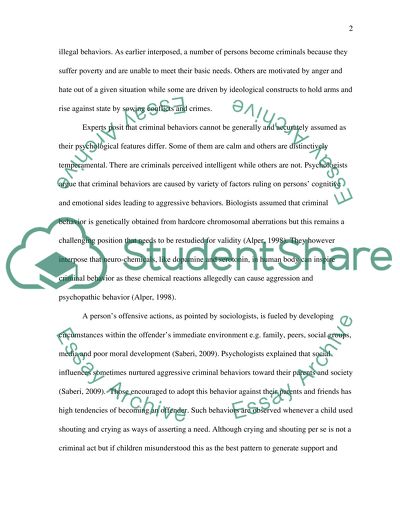Cite this document
(“Are criminals raised to be criminals Research Paper”, n.d.)
Are criminals raised to be criminals Research Paper. Retrieved from https://studentshare.org/psychology/1451811-are-criminals-raised-to-be-criminals
Are criminals raised to be criminals Research Paper. Retrieved from https://studentshare.org/psychology/1451811-are-criminals-raised-to-be-criminals
(Are Criminals Raised to Be Criminals Research Paper)
Are Criminals Raised to Be Criminals Research Paper. https://studentshare.org/psychology/1451811-are-criminals-raised-to-be-criminals.
Are Criminals Raised to Be Criminals Research Paper. https://studentshare.org/psychology/1451811-are-criminals-raised-to-be-criminals.
“Are Criminals Raised to Be Criminals Research Paper”, n.d. https://studentshare.org/psychology/1451811-are-criminals-raised-to-be-criminals.


